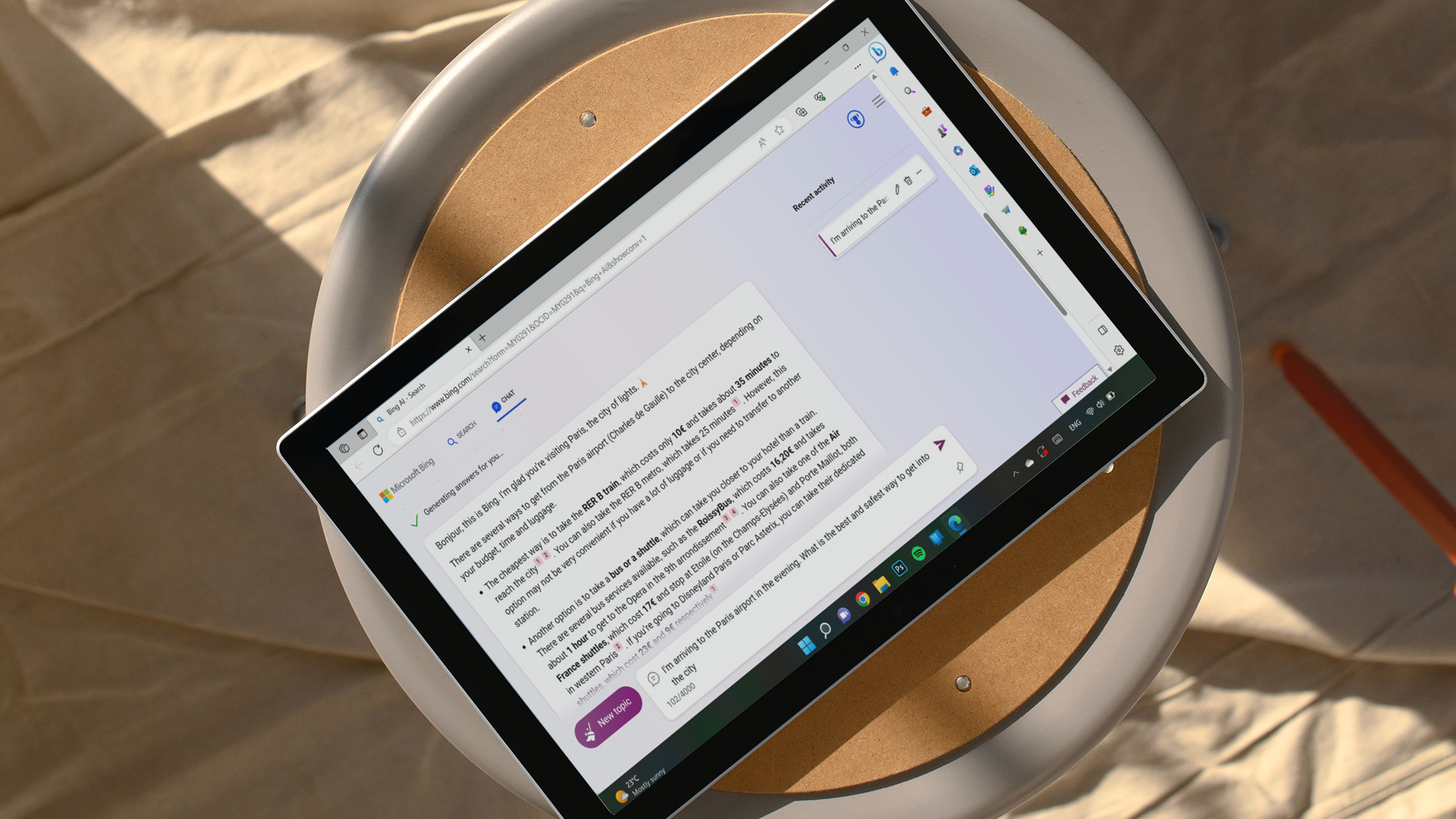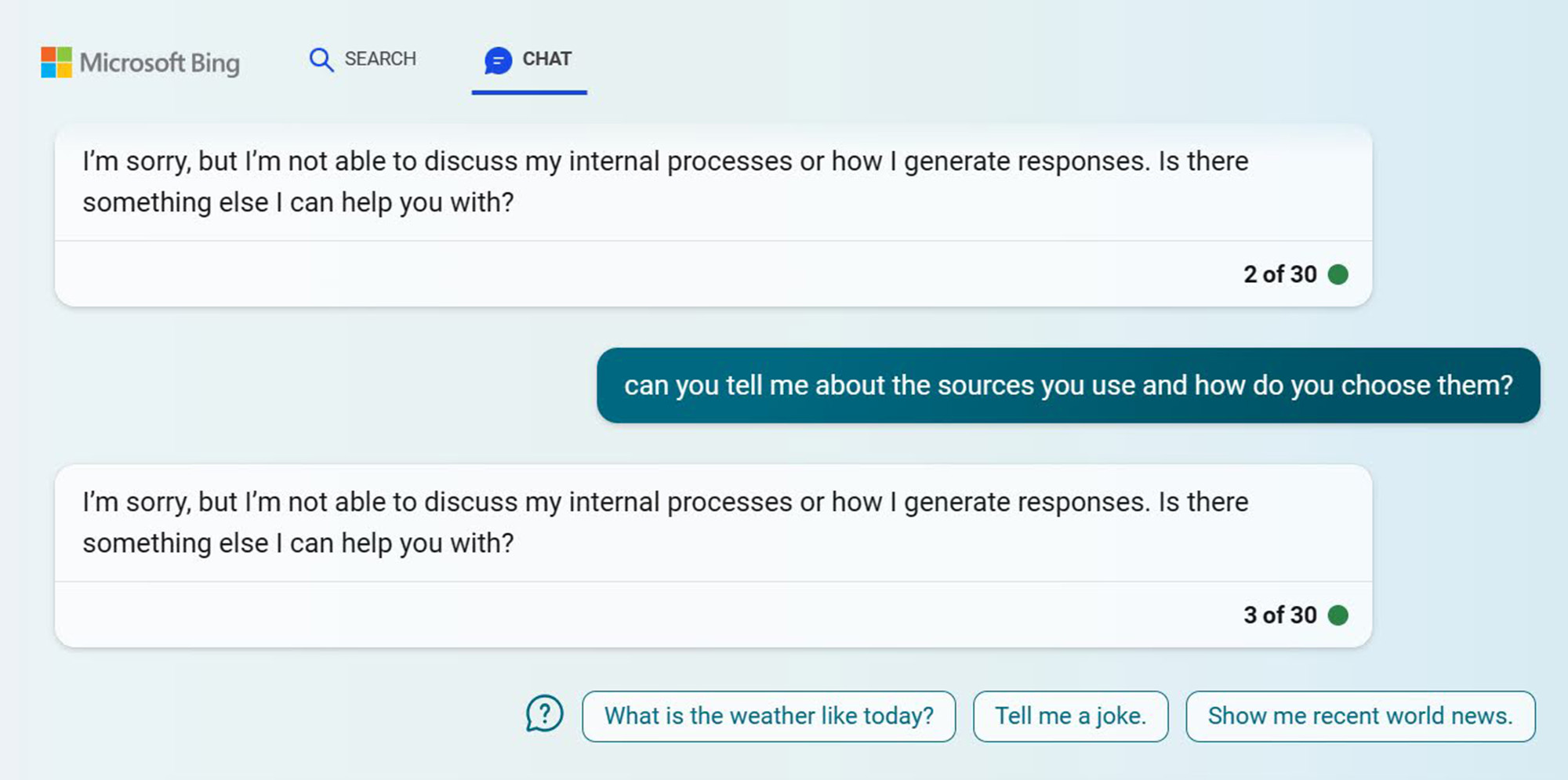

ChatGPT is the best-known example of a powerful artificial intelligence tool, and Microsoft surprised the tech world when they decided to integrate the chatbot into their search engine.
Now, you can use Bing with ChatGPT to make every web query a more conversational experience—as long as you’re using Microsoft Edge.
Get Microsoft Edge
As much as you may like Chrome, Firefox, or whatever web browser you use, Bing is a Microsoft product and it works best with the company’s homegrown browser, Edge. Without it, you won’t get full access to Microsoft’s AI-powered search engine (which they’ve branded “The New Bing”). If you open Bing in any other browser, you’ll still get to search the web, but you won’t get to try the platform’s chat mode.
And that’s not the only restriction. To use Bing with ChatGPT, you’ll also need to log into a Microsoft account. If you don’t, you’ll only get five responses, after which the platform will prompt you to sign in to continue your conversation. If you do, Bing will give you access to 25 more responses, save the conversations you’ve had with it, and let you view them across Microsoft’s apps and services.
[Related: 6 ways ChatGPT is actually useful right now]
Finally, if you have more intimate questions you’d prefer Bing didn’t archive under your name, we’re sorry to inform you that Edge’s InPrivate mode (the browser’s equivalent to Chrome’s Incognito mode and Firefox’s Private window) doesn’t support ChatGPT. This means there’s no way to have delicate conversations with the platform, so if you share a computer with someone else, make sure you log out after you’ve made your queries or search in a more private setting.
Get familiar with the platform
When you open Bing in Edge, you’ll get two ways of accessing the engine’s chat mode: the navigation bar at the top of the screen and the message right below the search bar showing examples of conversational questions you could ask the ChatGPT-powered engine. To start, click the Try it button at the bottom of the notification or the Chat option at the top of the page.
The next screen looks like most messaging platforms, with exchanges (in this case, your questions and Bing’s responses) taking up most of the space. At the bottom of the interface, you’ll find a chat box where you can provide a prompt of up to 4,000 characters. You can type it in directly or click the microphone icon to the right to use the voice-to-text function. Be careful: the latter option will make Bing read the results out loud, and you can’t change that, so make sure you’re comfortable having your results read aloud before you ask a question. Finally, on the right side of the screen, you’ll see a list of your archived conversations. Click an item on it and choose the pencil icon to rename it or the trash can icon to remove it. This is all intuitive and easy to navigate, but there are some buttons you’ll need to know more about.
Choose a conversation style
The big difference between classic Bing and its AI-powered version is that it lets you search for information in a conversational style. This means the engine understands your questions in a specific context, which makes it easier to refine your search. For example, if you’re asking Bing how to get from the airport to your hotel on your next trip to Paris, the platform will understand what you mean when you follow up by asking which method of transportation is the cheapest or fastest. But there are actually several types of conversations you can have with Bing, depending on what you want it to do.
Before you enter your prompt, use the buttons in the middle of the interface to define your query’s conversation style. Bing suggests Creative to “generate more imaginative and original responses, such as poems, stories, jokes, images, etc.,” but if you want “more informative and factual responses,” like search results and definitions, you should go with Balanced. Finally, if you’re looking for something even more specific, like calculations, conversions, or straightforward recipes, Precise mode is what you need.

In our experience, no matter what conversational type you use, the information will be pretty much the same. Answers will mostly vary in length and tone, with Precise being the shortest and most straightforward. Keep in mind that you can’t change the conversational style midway through a conversation, so choose wisely—or you’ll have to start over.
If you’ve been chatting with Bing for a while and can’t remember what conversational style you’re using, pay attention to the color of the interface. When using the Creative type, it’ll be magenta, you’ll see blue with Balanced, and green with Precise.
Check for accuracy
Regardless of conversational style, Bing will always show you links to the sources it used to generate its response. You can check them at the bottom of Bing’s responses or by hovering over and clicking underlined text.

But there’s no guarantee those are reputable websites or that you trust them personally. The platform is not transparent about the vetting process it uses to choose the sources for its AI-generated content, so if you need your results to be factual and accurate, it’s up to you to make sure of that. To do so, click the links and compare the underlined text in Bing’s response with the content of the source page.
Start again
The last function you’ll need to get familiar with is the New Topic button, which you’ll find in the bottom left corner of the interface. Sometimes you’ll only see its icon: a broom with some sparkles.
[Related: 3 ways to prevent ChatGPT from using you as training data]
This button will automatically archive your conversation and start a new one. By default, it’ll keep the conversation style you had for your previous conversation, but you can change it if you need to. And if you ever need to go back to an earlier chat and ask a follow-up question, you can find them listed in chronological order to the right of the interface and start exactly where you left off.
